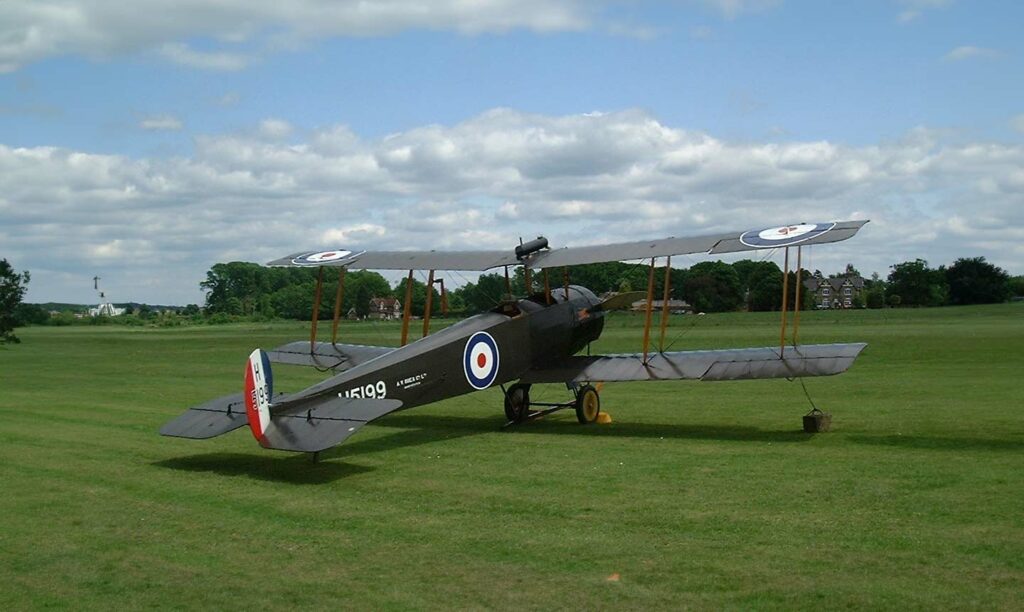Explore the Avro 504, a pivotal aircraft from 1913 that shaped aviation history, delving into its design, performance, military application, and enduring legacy.
The Avro 504, introduced in 1913, stands as one of the most iconic British aircraft of its era. Originally designed as a training and reconnaissance aircraft, its adaptability saw it employed in diverse roles, from bombing to aerial combat. The early 20th century was a period of rapid technological evolution, particularly in aviation. Among the pantheon of pioneering aircraft, the Avro 504 claims a significant spot, illustrating British ingenuity and adaptability during the tumultuous times of World War I.
History of the development of the Avro 504
The dawn of the 20th century saw an arms race, with nations fervently exploring aviation’s potential. Against this backdrop, the UK felt an acute need for advanced reconnaissance and training aircraft. Recognizing this, A.V. Roe and Company initiated the Avro 504 program.
The objective was clear: Develop an aircraft versatile enough for reconnaissance and capable of providing quality flight training for burgeoning RAF pilots.
The Avro 504 took its inaugural flight on July 18, 1913, marking the commencement of a storied career. As for a NATO nickname, it’s vital to understand that the Avro 504 predates NATO by several decades, making such a moniker inapplicable.
Design of the Avro 504
The Avro 504, a biplane, boasted a conventional design for its time. With a wingspan of 36 feet (10.97 meters) and a length of 29 feet 5 inches (8.97 meters), it was both compact and agile.
Advantages:
- Versatility: Its design facilitated varied uses, from training to combat.
- Robustness: The aircraft had a reputation for withstanding tough conditions, making it ideal for training rookie pilots.
- Ease of Production: Its relatively simple design expedited mass production.
Drawbacks:
- Limited Speed: Faster enemy aircraft could outpace it, especially as the war progressed.
- Modest Armament: Initial versions weren’t heavily armed, limiting its combat efficacy.

Performance of the Avro 504
The aircraft’s performance varied with its variant and the engine employed. Typically, the Avro 504K variant, powered by a 130 hp Clerget 9B rotary engine, could achieve speeds up to 90 mph (145 km/h). Its service ceiling stood at approximately 16,000 feet (4,877 meters), with a range of 250 miles (402 kilometers).
In comparison to its contemporaries, the Avro 504 wasn’t the fastest or the most potent, but its reliability and versatility rendered it invaluable, particularly as a trainer.
Military use and combat of the Avro 504
Initially employed for reconnaissance, the Avro 504’s roles soon expanded. With the onset of WWI, some were equipped with bombs, transforming them into makeshift bombers. As for armament, it typically carried a single .303 Lewis Gun and small bomb loads.
During the war, it served on various fronts, from home defense against Zeppelin raids to bombing missions over the Western Front. However, as the conflict progressed, newer, more advanced aircraft began to outclass it in direct combat roles.
Post-WWI, its role pivoted back to training, with various nations, including Australia, Brazil, and Japan, adopting it for their air forces. By WWII, it was largely phased out from frontline service, replaced by more modern trainers and combat aircraft.
The Avro 504’s legacy isn’t just in the battles it fought, but in the pilots it trained and the progress it signified in early aviation. While it had its shortcomings, its adaptability, and resilience cemented its place in aviation history, symbolizing a bygone era of innovation and determination.
Back to the Warbirds section.